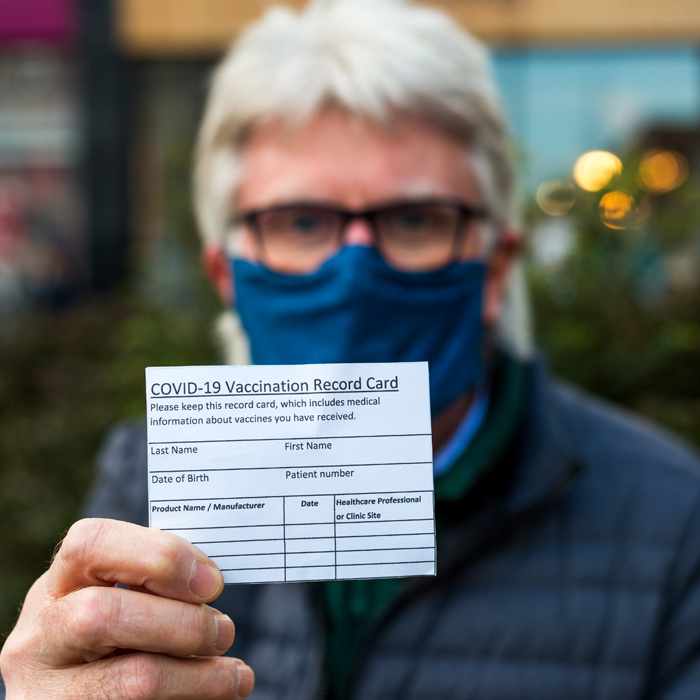
Vaccine Rollout: A Race Against Time?
The rollout of the Covid-19 vaccines has captured the attention of the world. This has been dubbed a race against time: how fast can we vaccinate people versus how quickly the virus mutates to more transmissible and potentially deadlier forms. The speed of the rollout will thus be key in determining how quickly society can be re-opened, and how quickly ‘herd immunity’ can be achieved after which the disease can be controlled. Although developing an effective vaccine was the bigger hurdle compared to distributing it, the scale of vaccination required and in short order, makes the rollout a mammoth task in itself.
How does the vaccination process work?
The vaccination process is fairly straight-forward: manufacture it, deliver to the vaccination centre, administer the vaccine and again in 21 days. However, there is a lot of complexity in each of those steps. Manufacturing is scalable and the only rate-limiting step is the availability of raw materials. Given the sheer amount of vaccine that is required globally, billions of doses this year, there is a huge demand on basics such as glass vials and cold chain storage facilities. Further the regulators need to test and approve each batch of vaccine and this could slow-down the process. The ‘fill and finish’ step could prove to be the defining bottleneck in manufacturing, as the capacity required normally takes years to develop, and may be redundant after the vaccination blitz of 2021, which may make companies hesitant to invest in it.
What are the distribution challenges?
Distribution of the vaccine is really a logistics challenge and for the mRNA vaccines – Pfizer/BioNTech and Moderna – an added cold chain challenge too. Can the required doses be delivered to the right vaccination centre on time and in the right quantities? The vaccine batches need to be opened and used right away. So a batch can only be opened once there are enough patients to take up the vaccine. That these first-generation vaccines require two doses adds to the complexity of getting the right people in at the right time for the booster doses. The need to vaccinate as many people as possible versus giving a booster dose on a three week schedule has led to a controversial plan to delay the second dose in the UK, and talk of it in many others.
Delaying the vaccine schedule from three weeks to twelve weeks has caused a stir in scientific circles. Firstly the clinical trial protocols did not test the twelve week schedule, ergo, no scientific basis for the change. Secondly there is no data on how the level of protection changes over the delayed schedule.
And if the virus mutates during the gap to the booster, does that render the second dose redundant? Finally, there are no data on what percentage of protection is conferred after the first dose. The thinking here is if the first dose confers 90% of the protection, the strict schedule may not matter as much as if it only confers 40% of the protection. Defenders of the change in schedule look at it from a public health perspective. Forty million doses will vaccinate twenty million people, about a third of the UK population, and we are still far from ‘herd immunity’. On the other hand, using a twelve week schedule, the same number of doses would vaccinate forty million people, two thirds of country and most likely get us to the point of herd immunity, ergo, save many more lives. The correct answer here is not black and white but a matter of judgement.
What about the dreaded M word?
The mention of mutations often gets the heart racing. In reality, mutations happen all the time. Many are inconsequential, others are lethal to the virus itself. A few make a significant change to the structure of the virus and how the immune system recognises and deals with the virus to merit attention. The recent UK and South African variants are examples of the latter. The risk is both natural immunity and vaccines would be that they become less effective against the new variants. There is good news on three fronts: mRNA vaccines are easy to engineer and can change the vaccine to match any mutations in eight weeks; secondly, current vaccines have such high efficacy rates over 90% that even if mutations were to reduce that significantly to say 60%, they would still have a lot of utility; finally the current vaccines target the viral receptor binding domain on the spike protein, the key that fits into a lock on the human cell without which it cannot enter the cell, and so it is unlikely that there will emerge a variant so radically different that it will render the current vaccines redundant.
Who should get the vaccine first?

The first group is easy to decide: those most at risk of severe disease, ergo, death. That group is composed of people over 75 years, and those with co-morbidities such as obesity, diabetes and chronic illnesses. Allied to that are the carers who interact with those people. Then it becomes murky. Should we then vaccinate on the basis of social factors once all the clinically relevant factors have been exhausted? Should we prioritise key workers over those from a BAME-background living in densely populated multi-generational households? Should we start with the poor who are most at risk from a socio-economic perspective or band everyone in the same age group together? Should we perhaps prioritise the adolescents and young adults who tend to have more social contacts? Should we vaccinate every last person in the UK who wants it before vaccines can be made available to those clinically vulnerable in poorer countries? In a world where vaccine supply is limited and sequenced, these are important questions, the answers to which are not straightforward.
An emerging and interesting debate is whether we should bother vaccinate the naturally immune. If someone has antibodies and thus some measure of protection, is it not better to give the vaccine first to those who are immunologically naïve?
Current guidance is everyone should get the vaccine, whether they have immunity or not. And those who have recovered do not even have to go to the back of the vaccination queue. And further they still get two doses of the vaccine whereas just one could probably act as a booster. One can see how if those with antibodies are not in the priority groups for the vaccine, we might reach herd immunity faster and make better use of scarce resources. The scientific community is still gathering the data to be able to definitively answer the questions of whether having recovered one is immune and for how long that immunity lasts.
Knowing what constitutes immunity to Sars-Cov-2 is of paramount importance. So far the answer eludes us, though we have strong data in primates such as macaques. The combination, and amount, of antibodies, memory B cells and T-cells that can fight off subsequent bouts of the virus is what is called the immune correlates of protection (COPs). A lot of work is being conducted in scientific circles to determine the COPs for Sars-CoV-2 virus and we expect to know them by the end of the first quarter. And the consequences of determining the COPs are huge. Would we need to re-vaccinate everyone again if there is a significant mutation? Do we need to booster doses every year or few years? What proportion of population protection would constitute herd immunity? And many more questions hinge on defining these COPs and hopefully being a low enough bar that can be easily cleared by current vaccines and naturally-derived immunity.
What more needs to happen?
The worst case scenario has already been averted. If we had been unable to develop an effective vaccine, we would be seriously limited in our ability to fight off this viral pandemic. As it is, the hard yards have already been made. Science has delivered but is not done yet. Continual surveillance will keep on top of new mutations and future vaccines will be engineered accordingly. Second generation vaccines are already in late stage development, and some will be a one-dose shot which has huge logistical implications. Others will use the whole inactivated virus which will prime the immune system for many more parts of the virus rather than just the spike protein, making it harder for future mutations to escape the immune response generated by the vaccine. In short, we have every confidence that we now have the tools to end the pandemic and it is now just a matter of time. The question is no longer if we can get our lives back, it is now when?

